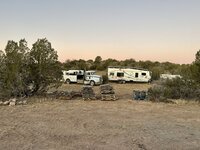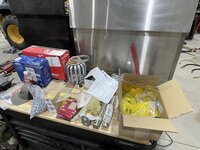monkeyswrench
To The Rescue!
- Joined
- Sep 7, 2018
- Messages
- 29,442
- Reaction score
- 84,103
@The Chicken , this will sound stupid probably for those that deal in this stuff. Could a large capacitor, or bank of them, be used to soften the load impact? I only ask because back in the old days we'd run 1 and 2 Farad caps as an "accumulator" on big stereo stuff. In one instance, a setup had 5 Farad caps  The voltages and amps that these systems run may make it unrealistic, but the concept worked on the smaller scale, though extremely simplistic in comparison.
The voltages and amps that these systems run may make it unrealistic, but the concept worked on the smaller scale, though extremely simplistic in comparison.






